At Mount Koya, Stepping Back Over a Thousand Years of Japanese Buddhism
The Three Sacred Mountains in Kansai #02

The road leading to Mount Koya is long, winding and filled with obstacles. How could it be otherwise? A sacred place unlike all others in this hidden Japan, far from Tokyo and its flashing neon lights, the holy mountain, named a World Heritage Site by Unesco, does not reveal itself easily or without patience. What a meandering route from Kansai International Airport! A pilgrimage, or something very much like one. But it is certainly one of the charms of any journey that routes similar to those inspiring only boredom and indifference in our daily lives quickly become attractive, even poetic. Not to mention the thrill of travelling in Japan, climbing aboard its trains, true marvels of comfort leaving nothing to chance, pampered by personnel attentive to your every need, enjoying the wonderful muted ambience, propitious to reverie and jaunts of imagination. Immediately, you are elsewhere.
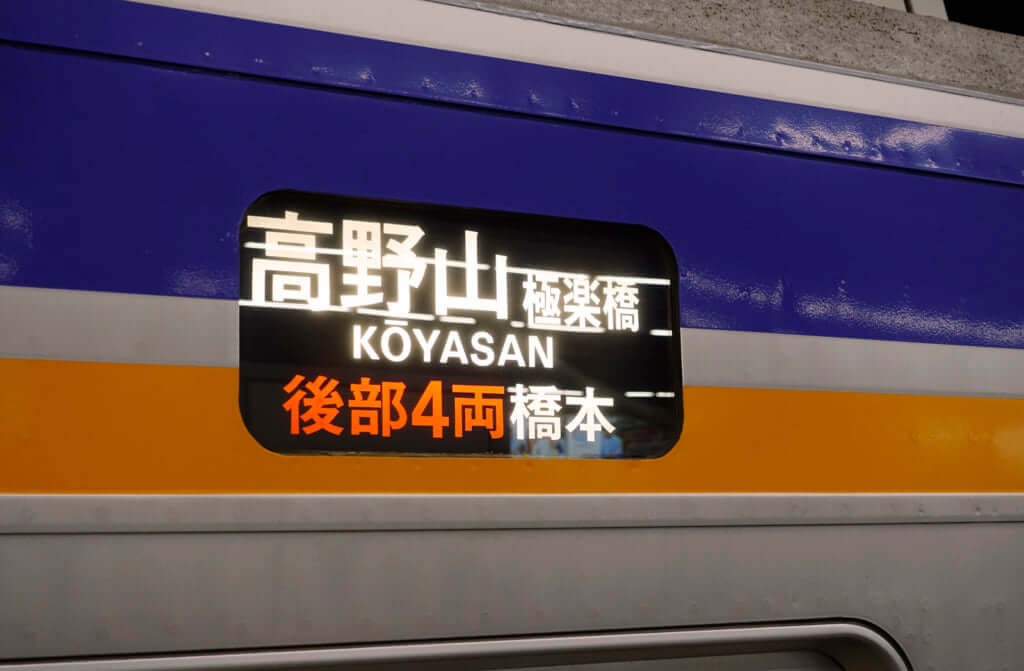
From the Kansai airport, lines operated by Nankai take us first to Namba, directly into the beating heart of Osaka, then to Hashimoto via the Nankai-Koya line. With the funicular closed for service until the spring, the last leg of the route must be travelled by bus, through enchanting hairpin turns offering a spectacle beyond compare. And finally we arrive, at nearly 1,000 meters above sea level. It was in the year 805 that Kukai, a Buddhist monk having spent two years in China studying the foundational texts of esoteric Buddhism, which would become known as Shingon in Japan, set his heart on establishing a monastic center here. He would found Kongobu-ji, the first and most important of the nearly 2,000 temples that would be built on the mountain. Legend has it that he had thrown a sanko (a type of three-headed harpoon used in Buddhist ceremonies) and, after following its trajectory, met up with a hunter accompanied by two dogs, one black and the other white, who led him to Mount Koya, thus cementing his choice. So it is not surprising that we find these symbols, the sanko and the two dogs, in many places on the mountain.
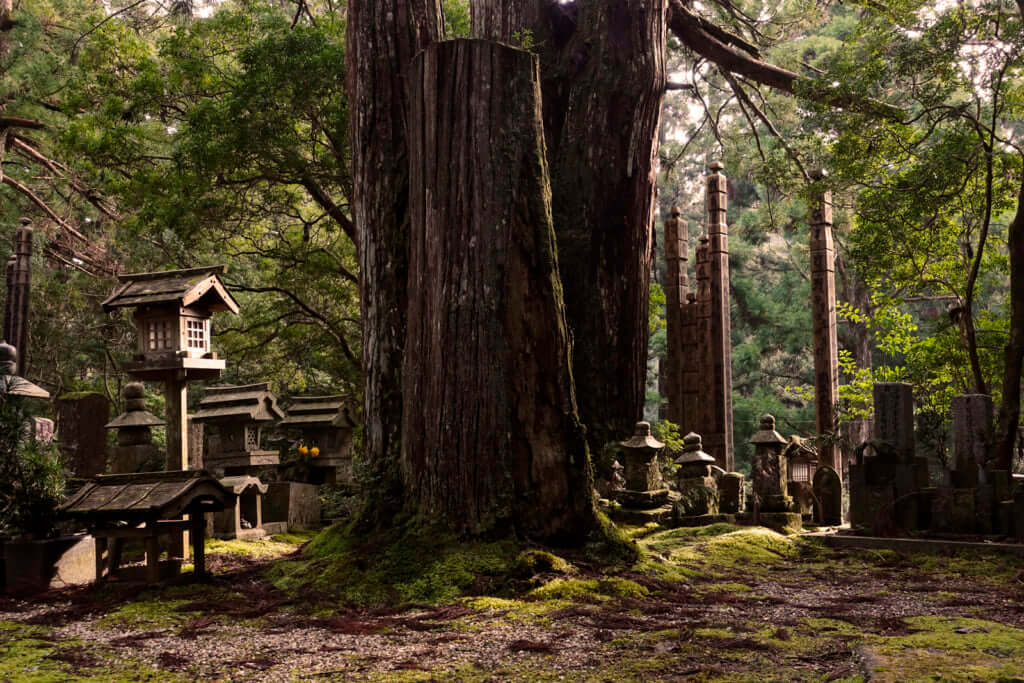
When Kukai retired to meditate until the advent of Maitreya, the next Buddha, the title of Kobo-Daishi was bestowed on him by the emperor. And it is here that he lives on, deep in meditation, at the end of a long walkway extending for just over two kilometres, a magnificent path lined with centuries-old trees and thousands of tombstones (more than 200,000 of them, making the site the largest cemetery in Japan), many of which guard the ashes of the powerful—politicians, prominent business leaders, warriors—all delighted to rest for eternity near the beloved monk. Owing to its immense beauty and the solemnity it conveys, not to mention its unique atmosphere, conducive to reflection and introspection, the site alone makes the long journey worth every minute. Here it is as if we are outside time, transported far away to a place bathed in tranquility, like being alone in the world. The entrance to the cemetery is via the Ichinohashi bridge. Two kilometres farther on, we reach Okunoin, literally ‘inner temple’, the eternal refuge of Kobo-Daishi since his passing in 835. Day after day for nearly 1,300 years, the faithful have brought him carefully prepared meals consisting of rice, miso soup, udon or soba noodles, tofu or even fruit, a vegetarian cuisine like that served in the many temples dotting the sacred mountain.
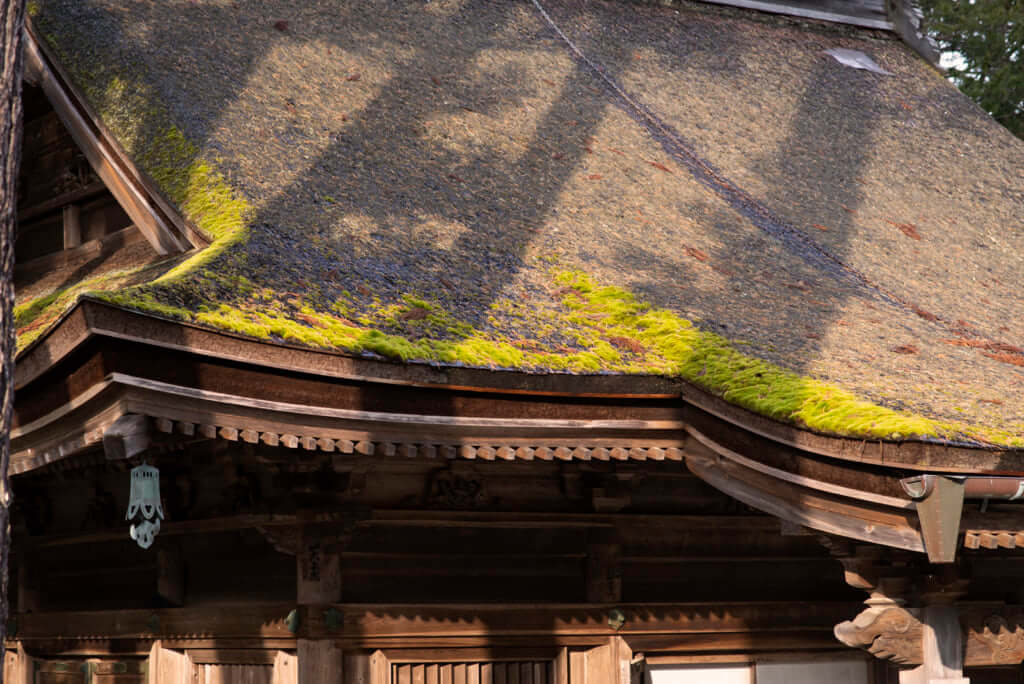
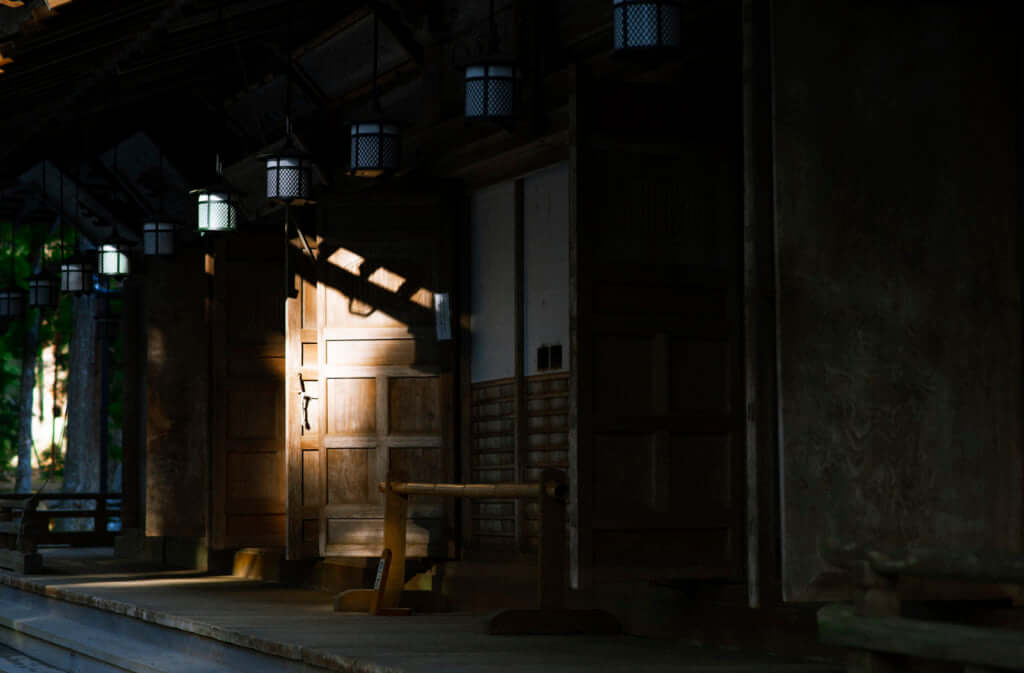
Of the hundred or more temples on Mount Koya, nearly half welcome visitors who come here to pray, meditate or just enjoy a restful moment, leaving behind all daily concerns. Although the rooms only provide simple traditional comforts, with their tatamis and their shoji (wood-framed rice paper sliding doors), the experience is far from ordinary. As dawn breaks each morning, a series of gongs announces the start of the ceremonies. One of the Buddhist priests chants sutras, while the others accompany him by beating the taiko drums. A jewel of a moment, the kind that stays with you long after you leave. Once the ceremony ends, our breakfast is waiting for us in the room, some rice of course, tofu, a few pickled vegetables, a bowl of soup. Happiness can be found in the simplest of things. Soon it will be time to take up our journey again. Next stop, Mount Yoshino, with its sacred walkways and its cherry trees by the thousands.
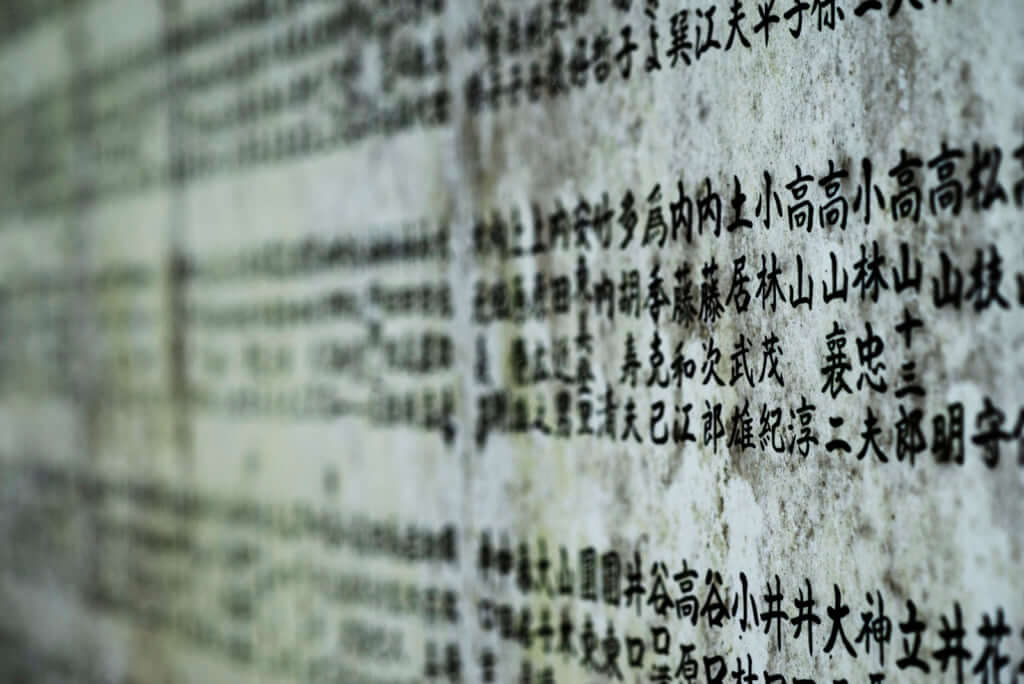
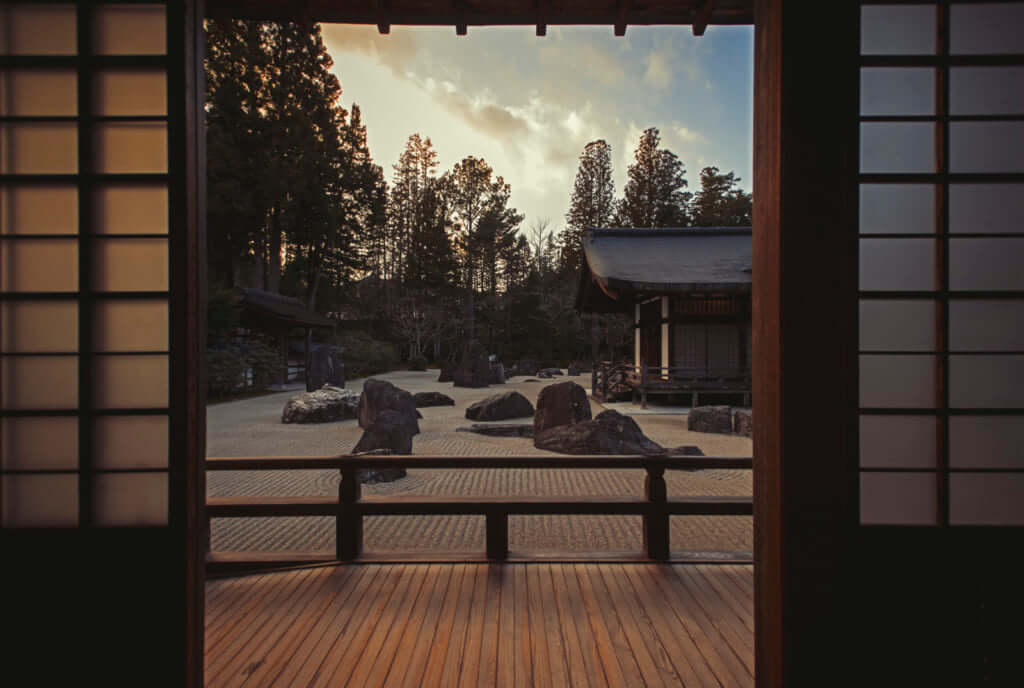
TRENDING
-
A House from the Taisho Era Reveals Its Secrets
While visiting an abandoned building, Hamish Campbell discovered photographs the owner had taken of the place in the 1920s.

-
The Taboo-Breaking Erotica of Toshio Saeki
The master of the 1970s Japanese avant-garde reimagined his most iconic artworks for a limited box set with silkscreen artist Fumie Taniyama.

-
With Meisa Fujishiro, Tokyo's Nudes Stand Tall
In the series 'Sketches of Tokyo', the photographer revisits the genre by bringing it face to face with the capital's architecture.

-
Masahisa Fukase's Family Portraits
In his series ‘Family’, the photographer compiles surprising photos in which he questions death, the inescapable.

-
Hajime Sorayama's Futuristic Eroticism
The illustrator is the pioneer for a form of hyperrealism that combines sensuality and technology and depicts sexualised robots.





